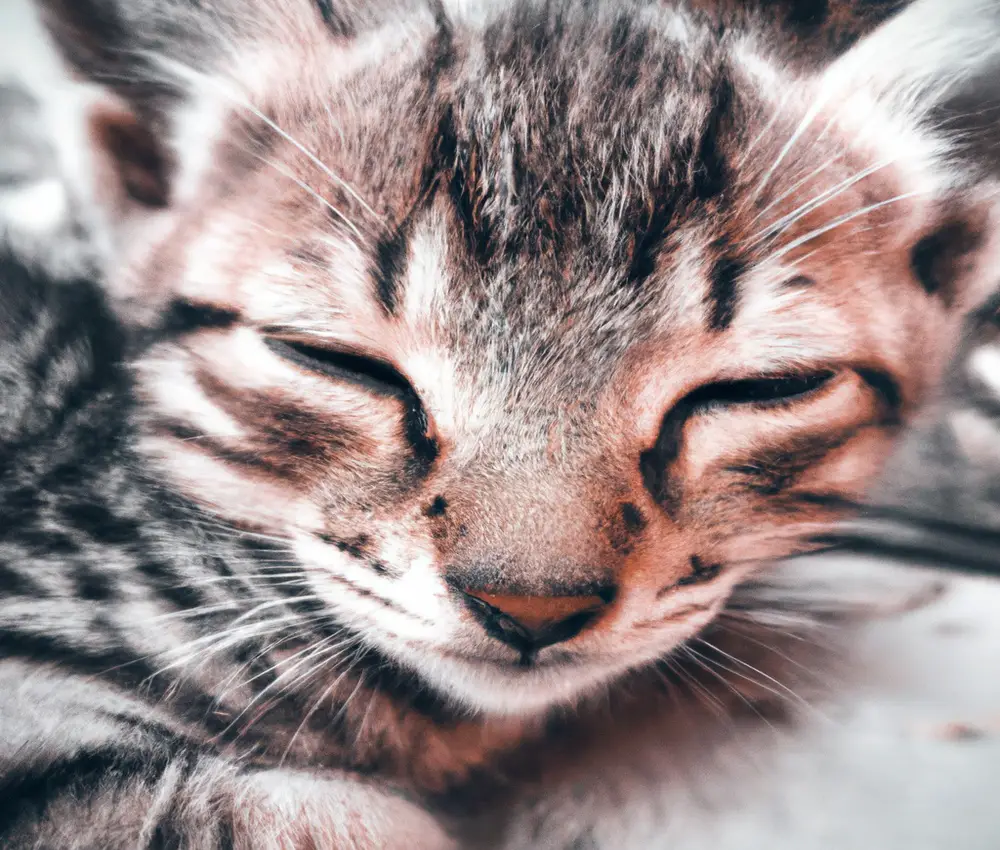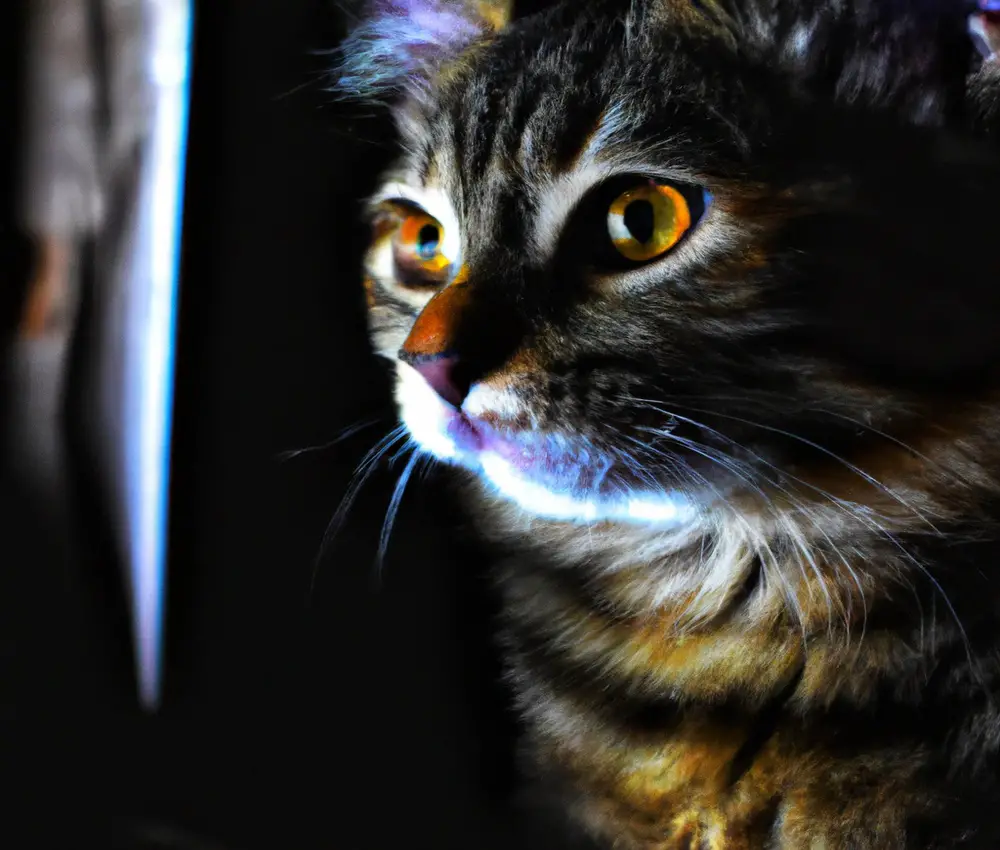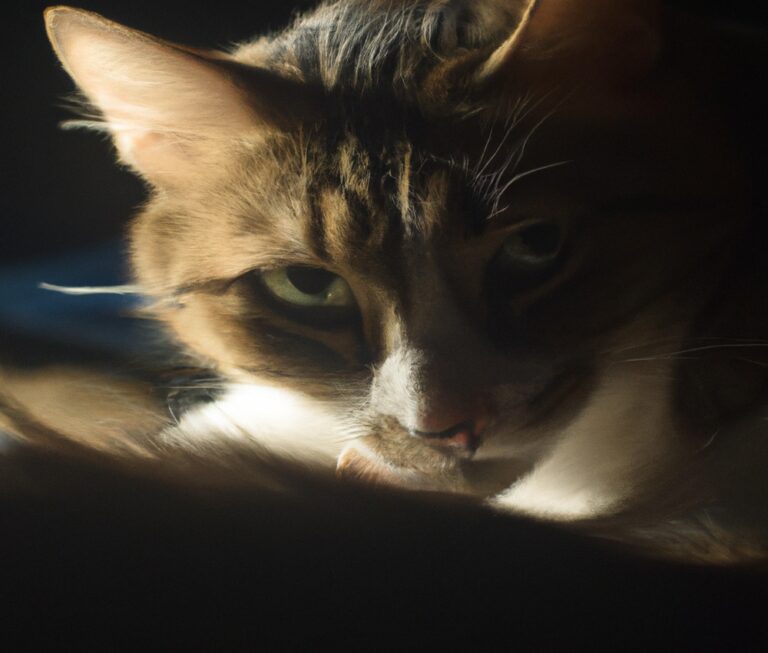Is It Common For Cats To Be Missing An Eye?
Key Takeaways:
- Missing an eye is not a common occurrence in cats.
- Cats can lose an eye due to accidents, injury, or medical conditions.
- Cats can adapt well to life with one eye and lead a normal, healthy life.
- Regular veterinary check-ups are important to detect any underlying issues that could lead to eye problems in cats.
Have you ever come across a one-eyed kitty and wondered, “Is it common for cats to be missing an eye?” Well, let’s dive into this fascinating topic together.
As a cat lover and longtime feline owner, I’ve encountered my fair share of cats with one eye.
In this article, we’ll explore the common causes of cats missing an eye, how to recognize the signs and symptoms, ways to cope and care for these special kitties, and answer some frequently asked questions.
So, whether you’re a concerned cat parent or just curious about our feline friends, stick around to uncover the truth about cats with one eye.
| Question | Answer |
|---|---|
| Is it common for cats to be missing an eye? | No, it is not common for cats to be missing an eye. |
Common Causes of Cats Missing an Eye
There are several common causes for cats missing an eye such as traumatic injury, congenital defects, eye infections and diseases, and surgical removal of the eye.
Traumatic Injury
Traumatic injury is one of the common causes of cats missing an eye. It can occur due to accidents, fights with other animals, or even from getting caught in objects like fences.
When a cat experiences a traumatic injury to the eye, it may result in blindness or the need for surgical removal of the affected eye.
It’s essential to provide immediate veterinary care to prevent further complications and ensure the cat’s well-being.

Congenital Defects
Congenital defects in cats refer to abnormalities or malformations present at birth.
These defects can affect various parts of the body, including the eyes.
Some common congenital defects that can lead to cats missing an eye include:
- Anophthalmia: This is a condition where a cat is born without one or both eyes.
- Microphthalmia: It occurs when a cat is born with abnormally small eyes.
- Eyelid Abnormalities: Cats may be born with eyelids that don’t develop properly, leading to eye complications or even loss.
Eye Infections and Diseases
Eye infections and diseases are common among cats and can lead to the loss of an eye.
Common infections include conjunctivitis and herpesvirus.
Other diseases such as glaucoma and cataracts can also cause eye problems.
Symptoms may include redness, discharge, swelling, and squinting.
It’s important to seek veterinary care if your cat shows any signs of an eye infection or disease to prevent further complications.
Regular check-ups and proper hygiene can help prevent these issues.

Surgical Removal of the Eye
Surgical removal of the eye, also known as enucleation, is a procedure that involves the removal of the entire eye from its socket. It is commonly performed when a cat’s eye is severely injured, diseased, or causing significant pain.
During the surgery, the eye is carefully removed, and the area is closed to promote healing.
After the procedure, cats can adapt well to their new normal, and most continue to lead happy and healthy lives with only one eye.

Recognizing Signs and Symptoms of Cats Missing an Eye
Recognizing signs and symptoms of cats missing an eye involves looking for visible absence of the eye and changes in behavior or appearance. Additionally, keep an eye out for any discharge or redness in the eye socket.
Visible Absence of the Eye
The visible absence of an eye in a cat can be a result of various conditions and injuries. It is essential to note that cats can be missing an eye due to:
- Trauma: Severe injuries, such as accidents or fights, can result in the loss of an eye.
- Infection: Certain infections, like a severe eye infection or untreated abscess, can lead to the removal of the affected eye.
- Congenital abnormalities: Some cats are born with a condition called anophthalmia, where they are missing one or both eyes.
- Surgical removal: In some cases, veterinarians may need to remove an eye due to medical reasons, such as tumors or severe damage.
Changes in Behavior or Appearance
Changes in Behavior or Appearance Cats missing an eye may exhibit certain changes in behavior or appearance.
Keep an eye out for these signs:
- Squinting or excessive blinking: A cat with an eye missing may squint or blink more frequently to compensate for the loss of depth perception.
- Tilting the head: If your cat tilts their head to one side, it could be a sign of their eye being missing. This helps them to adjust their remaining eye to focus better.
- Altered grooming habits: Cats may groom more or less depending on their individual response to the loss of an eye. It’s important to observe any changes in their grooming behavior.
Discharge or Redness in the Eye Socket
If you notice your cat having discharge or redness in the eye socket, it could be a sign of an underlying issue.
It’s essential to monitor the condition closely and seek veterinary care if necessary.
Discharge can indicate an infection or an injury, while redness could be a sign of inflammation or irritation.
Other symptoms to look out for include squinting, pawing at the eye, or changes in behavior.
Your vet will be able to diagnose the cause and provide appropriate treatment.
Coping and Caring for Cats Missing an Eye
Caring for cats missing an eye involves providing a safe environment and promoting good eye health in the remaining eye.
Regular veterinary check-ups are also important.
Providing a Safe Environment
Providing a safe environment for a cat missing an eye is essential.
Ensure there are no hazards like sharp objects or precarious furniture that could cause accidents.
Use blind-friendly toys that make noise or have interesting textures.
Keep the litter box easily accessible and avoid sudden changes in the environment to reduce stress.
Provide soft bedding and consider installing ramps or steps to make it easier for them to navigate.
Regularly check their eye socket for any signs of infection or irritation.
Regular Veterinary Check-ups
Regular veterinary check-ups are important for the overall health and well-being of your cat.
During these check-ups, the vet will examine your cat’s eyes, ears, teeth, and other body systems to detect any potential issues.
They will also administer necessary vaccinations and perform preventive treatments, such as parasite control.
These check-ups allow early detection and treatment of any health problems, ensuring your cat lives a happy and healthy life.
So, make sure to schedule regular veterinary check-ups for your furry friend!
Promoting Good Eye Health in the Remaining Eye
Promoting good eye health in the remaining eye is essential for your cat’s overall well-being.
Here are a few tips to ensure the health of your cat’s remaining eye:
- Regular veterinary check-ups: Take your cat for regular check-ups to detect any early signs of eye problems and to receive proper guidance on eye care.
- Proper nutrition: Feed your cat a balanced diet rich in essential nutrients, such as vitamin A, that promote good eye health.
- Environmental adjustments: Make sure your cat’s environment is safe and free from potential eye hazards, such as sharp objects or chemicals.
- Regular cleaning: Gently wipe your cat’s remaining eye with a clean, damp cloth to remove any dirt or discharge. Be extra careful not to irritate the eye.
- Avoidance of excessive stress: Stress can affect the immune system and overall health, including the eyes. Create a calm and stress-free environment for your cat.
FAQs about Cats Missing an Eye
Is it common for cats to be born with only one eye?
Cats being born with only one eye is a rare occurrence. While it is not common, there have been cases where cats are missing one eye from birth.
There can be various reasons for this, including genetic factors or developmental abnormalities.
It is important to remember that cats are adaptable, and even if they have only one eye, they can still lead a happy and fulfilling life. Ensuring their safety and providing extra care may be necessary to account for their visual impairment.
Can cats live a normal life with one eye?
Cats can live a normal life with one eye. They have a remarkable ability to adapt, and losing an eye doesn’t hinder their quality of life.
They can still hunt, play, and navigate their surroundings effectively.
Cats rely more on their other senses, such as hearing and smell, to compensate for the loss of vision. However, it’s important to provide them with a safe environment and regular veterinary check-ups to ensure their overall well-being.
How can I help a cat adapt to life with one eye?
Losing an eye can be challenging for a cat, but with some love and support, they can adapt well to their new life. Here’s how you can help:
- Create a safe environment: Ensure that your home is free from hazards and obstacles that could cause accidents. Remove sharp objects and secure furniture to prevent accidents.
- Slowly introduce changes: Cats rely on their vision, so sudden changes in their environment can be overwhelming. Make any modifications gradually, allowing them time to adjust.
- Keep a routine: Cats thrive on routine, so try to establish a consistent daily schedule for feeding, playtime, and litter box maintenance. This can help them feel more secure and at ease.
- Encourage mental stimulation: Engage your cat in interactive play and provide toys that stimulate their senses. Puzzle toys or treat dispensers can keep them mentally active and entertained.
- Offer extra support: Help your cat navigate their surroundings by providing them with textured surfaces or ramps for ease of movement. You can also place food and water bowls in easily accessible locations.
- Regular veterinary check-ups: It’s crucial to monitor your cat’s overall health, especially their remaining eye. Schedule regular visits to the vet for check-ups and monitor any changes in their behavior or eye condition.
Remember, patience and understanding are key. With your love and care, your cat can adapt and live a happy, fulfilling life with one eye.
Final Verdict
While it may not be extremely common, there are several reasons why cats may be missing an eye.
Traumatic injuries, congenital defects, eye infections, and surgical removal are some of the common causes.
Recognizing the signs and symptoms, such as the visible absence of the eye or changes in behavior, is essential for early intervention and proper care.
Coping and caring for cats missing an eye involve providing a safe environment, regular vet check-ups, and promoting good eye health in the remaining eye.
It is important to note that cats can live a normal life with one eye, and with proper support and adaptation, they can thrive.
Being understanding and patient with these remarkable resilient creatures will go a long way in helping them adjust to their new reality.







